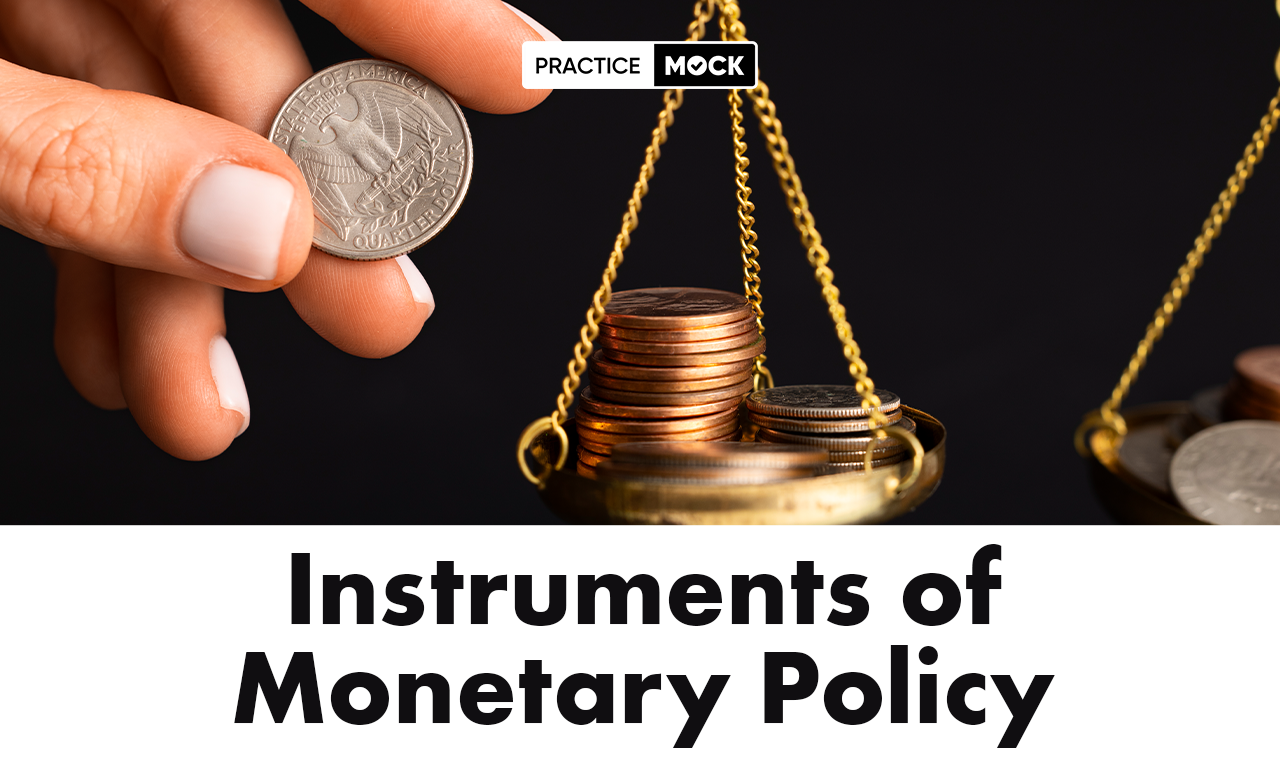Instruments Of Monetary Policy: All that monetary policy is is an economic strategy that can control the amount and rate of expansion of the money supply within a particular economy. One effective strategy for controlling macroeconomic factors like inflation and unemployment is monetary policy. The monetary authority of a country, which regulates interest rates, the money supply, and short-term borrowing, formulates and implements monetary policy. In order to ensure price stability and public confidence in the economy’s currency, monetary policy often concentrates on inflation and/or interest rates. The Reserve Bank of India (RBI) has the authority to implement monetary policy in India.
Monetary Policy Meaning & Overview
- A variety of instruments, including interest rate adjustments, changes to the quantity of cash in circulation in the economy, and the buying or selling of government assets, are used to carry out monetary policy.
- In India, the RBI, the central bank, is in charge of creating and carrying out these monetary policies. Through monetary policy, the RBI manages national inflation.
- To accomplish its goals, the RBI employs a wide range of monetary instruments, including the Repo Rate, SLR, CRR, and reverse repo rate.
Objectives of Monetary Policy
Monetary policy’s primary goals include controlling inflation, maintaining currency exchange rates, reducing unemployment, and other issues. The goals of India’s monetary policy are as follows:
Unemployment
An important factor in controlling the unemployment rate in the economy is monetary policy. A policy of expansionary monetary policy, for example, would result in lower unemployment rates since it would stimulate business activity and create more job possibilities.
Currency Exchange Rates
The RBI controls the rates at which international and domestic currencies are exchanged by using its fiscal authority. The RBI, for example, can print additional money to expand the money supply. When that happens, the local currency becomes comparatively less expensive than its international equivalents.
Inflation
Inflation rates are another focus of monetary policy. It is thought that the economy is doing well when there is little to no inflation. A contractionary monetary strategy can alleviate high levels of inflation.
Monetary Policy Process (MPP)
The Monetary Policy Committee (MPC) is in charge of figuring out the policy interest rates required to combat inflation. The Monetary Policy Department (MPD) of the RBI helps the MPC create the nation’s monetary policy. The RBI’s analytical support and the opinions of the major economic players are factors that go into determining the policy repo rate. Daily liquidity management activities are how the Financial Markets activities Department (FMOD) implements the monetary policy. Every day, the Financial Market Committee (FMC) meets to discuss the state of the economy’s liquidity. This is done to make sure that the policy repo rate and the monetary policy’s operating target are in sync.
Monetary Policy Committee (MPC)
The Monetary Policy Committee (MPC) currently makes the decisions about the policy interest rates needed to meet inflation targets. Six members are appointed by the central government to the MPC in accordance with Section 45ZB of the 1934 RBI Act amendment. The MPC convenes four times a year on average. Four people make up the quorum for the MPC meeting. Each member is only allowed one vote; in the event that there is a tie for votes, the governor is entitled to a second or casting vote. Every MPC meeting ends with the publication of the resolution that was approved by the MPC. The Monetary Policy Report must be released by the RBI once every six months. This policy outlines the causes of inflation and provides an inflation estimate for the next six to eighteen.
Instruments Of Monetary Policy FAQs
Monetary measures are also called Federal measures. The monetary authority of a country adopts these measures to stabilise the country’s economy by reducing inflation.
The Reserve Bank of India is responsible for formulating and implementing the monetary policy of India.
- Sign Up on Practicemock for Updated Current Affairs, Free Topic Tests and Free Mini Mocks
- Sign Up Here to Download Free Study Material
Free Mock Tests for the Upcoming Exams
- IBPS PO Free Mock Test
- RBI Grade B Free Mock Test
- IBPS SO Free Mock Test
- NABARD Grade A Free Mock Test
- SSC CGL Free Mock Test
- IBPS Clerk Free Mock Test
- IBPS RRB PO Free Mock Test
- IBPS RRB Clerk Free Mock Test
- RRB NTPC Free Mock Test
- SSC MTS Free Mock Test
- SSC Strenographer Free Mock Test
- GATE Mechanical Free Mock Test
- GATE Civil Free Mock Test
- RRB ALP Free Mock Test
- SSC CPO Free Mock Test
- AFCAT Free Mock Test
- SEBI Grade A Free Mock Test
- IFSCA Grade A Free Mock Test
- RRB JE Free Mock Test
- Free Banking Live Test
- Free SSC Live Test



